1904 ? Balt. Sterling Silver Co. price list/catalog


1904 ? Balt. Sterling Silver Co. price list/catalog


1904 ? Baltimore Sterling Silver Company Price List
From the collection of Charles C. Stieff II
(Courtesy of Charles C. Stieff III)
Charles C. Stieff III has provided this important and one of a kind document that he found in his fathers papers. The exact age is not known, there is a comment on the front page that states BEFORE 1904. This may be earlier or it could be early 1904. Baltimore Sterling Silver Co. existed until June 1904 before the name changed to THE STIEFF COMPANY.
However, we know from a letter dated Feb. 17, 1904 that on that date
Chas. C. Stieff was President of the firm. So, had Baltimore Sterling produced earlier copies of this price list with Mr. Stieff as Manager and just did not change the title page... or is this from a year earlier than 1904. If so, that would change the common introduction date of Chrysanthemum to an earlier year.
On these pages are TWO “unknown” flatware patterns are listed “VESTALIA” and “BALTIMORE”. Also shown are Maryland the early name for ROSE and the Victoria pattern. New to the line would be CHRYSANTHEMUM and the most expensive pattern made by the company.
There are two patterns shown were basically “lost” for generations. Pieces would be found, but the names had been lost to history. I have been able to identify these patterns and present them here.
VESTALIA
Roman Goddess, Sacred to Women
(as in Vestial Virgins)
Vestalia sounds like a pretty feminine pattern name, especially in the Victorian period that it would have been developed. Note the HEART SHAPED “V” in the bottom of the patterning.
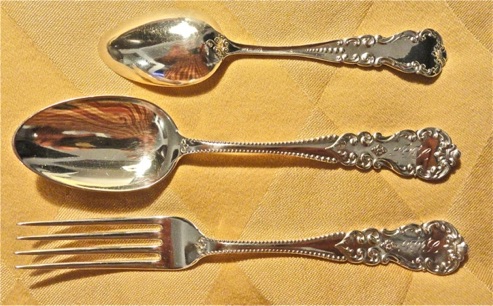
From my private collection of Stieff Silver
While these pieces are not marked, others have the STIEFF markings.

As the lowest priced pieces in the Baltimore Sterling Silver Co. line, these nice but simple to produce patterns would have been “fit the bill” for a low cost victorian silver pattern. Vestalia is a very light pattern. The pattern is very thin and the beading and scroll work around the edges adds strength. It is very easily bent.
BALTIMORE
aka Channel Back
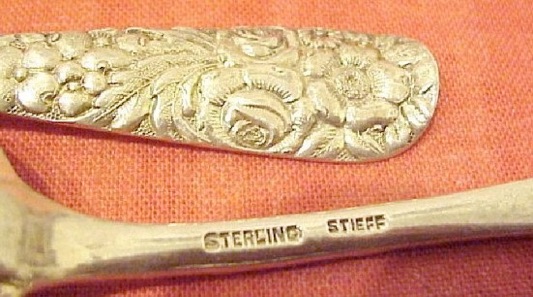
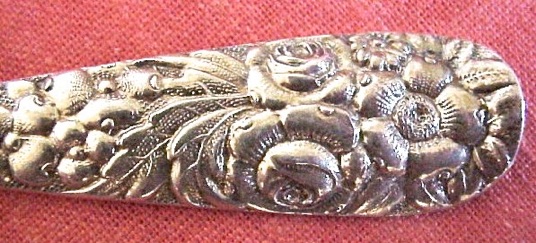
The “Rose patterns” of Baltimore have been know for generations as “Baltimore Rose”
(Schofield produced this pattern as Hand Chased Rose, and had it’s own pattern called Balt. Rose)
Calling this pattern BALTIMORE would have been very natural. The cluster of flowers is typical of other
Repoussé patterns being developed in the 1870s.
The pattern originated with Klank & Bro. in 1872. When
George Klank went out on his own in 1892 to create Klank Manufacturing Co., he took the pattern with him.
Klank & Bro. became Klank & Son and they too made the pattern. Klank & Son failed and was absorbed by
Herr-Schofield in 1905. Schofield called the pattern
“Hand Chased Rose” which was most likely the name used by the Klank family.
The Price List you see below is in black & white. The original is in Stieff Blue (royal)
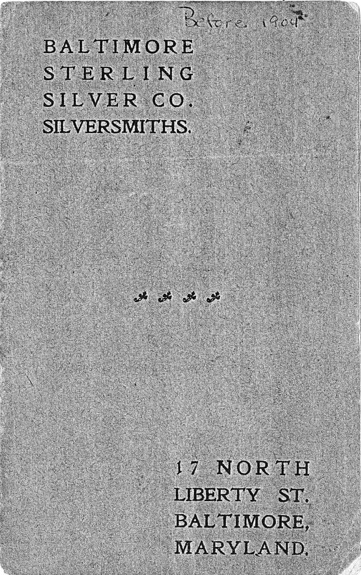
A small notation on the top edge says Before 1904, however this is most likely from early 1904 as
Chrysanthemum is shown as a pattern.
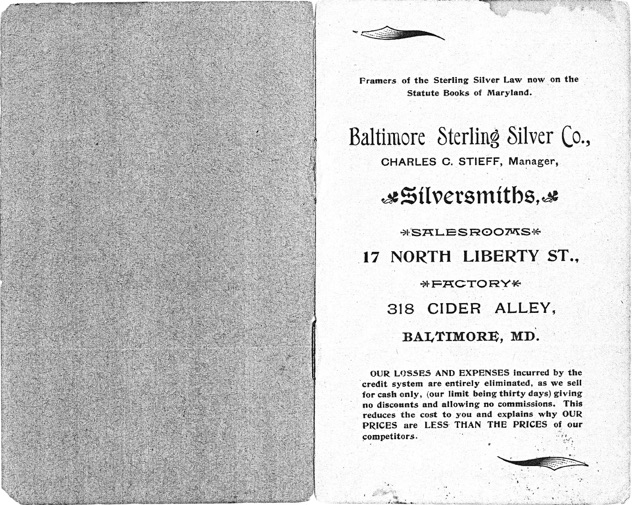
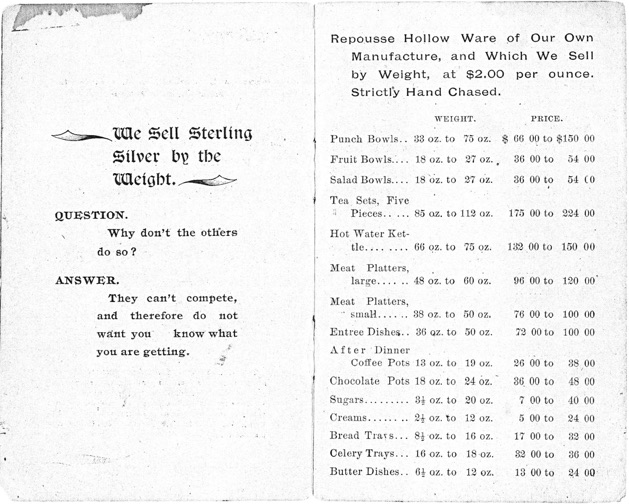
Note that in the “answer” section, the word “to” is missing from the blank space.
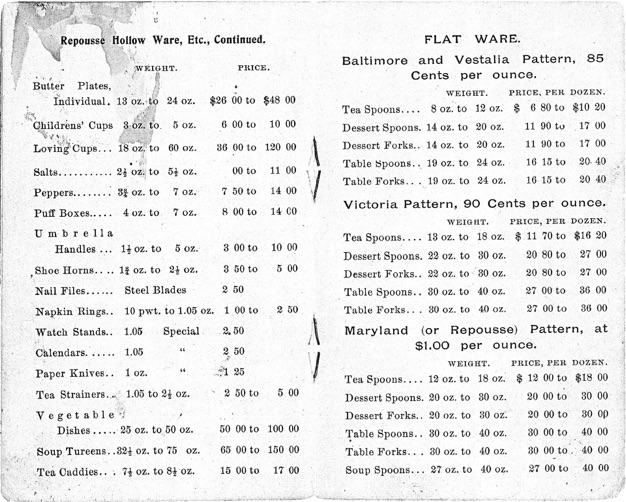
The salts seem to range from priceless to 11 dollars.
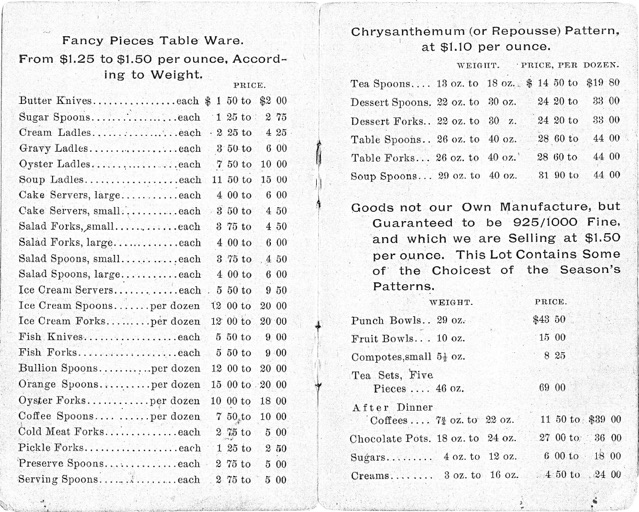
Ice Cream Spoons and Ice Cream Forks are listed. Charles C. Stieff also owned The Chas. C. Stieff Co. which dealt in other companies goods, including International Silver Company products. The
“goods not our own manufacture” would have been these other lines carried.
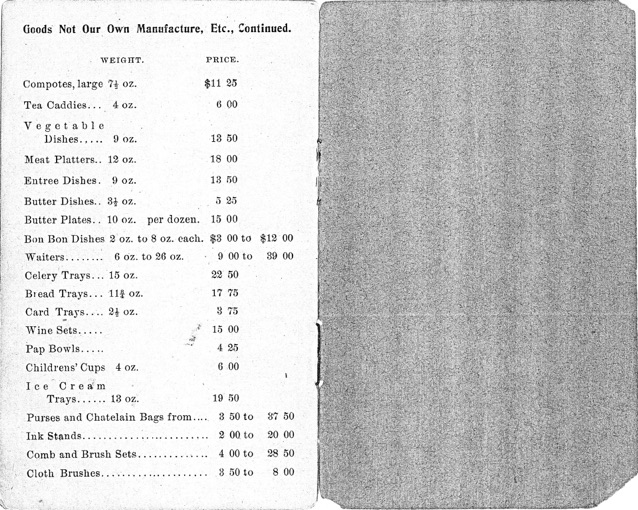
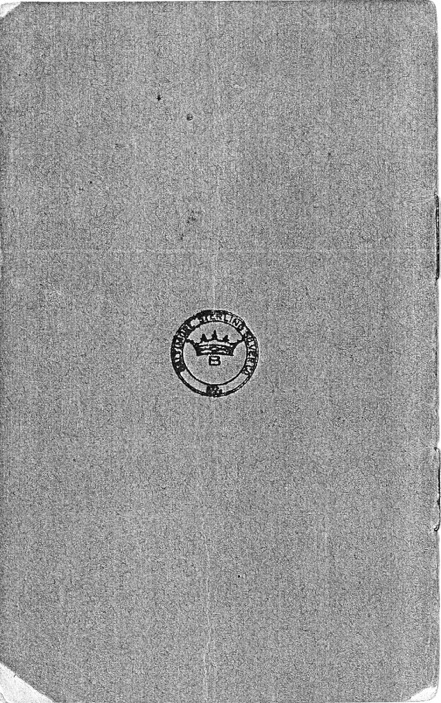
Back of the price list
